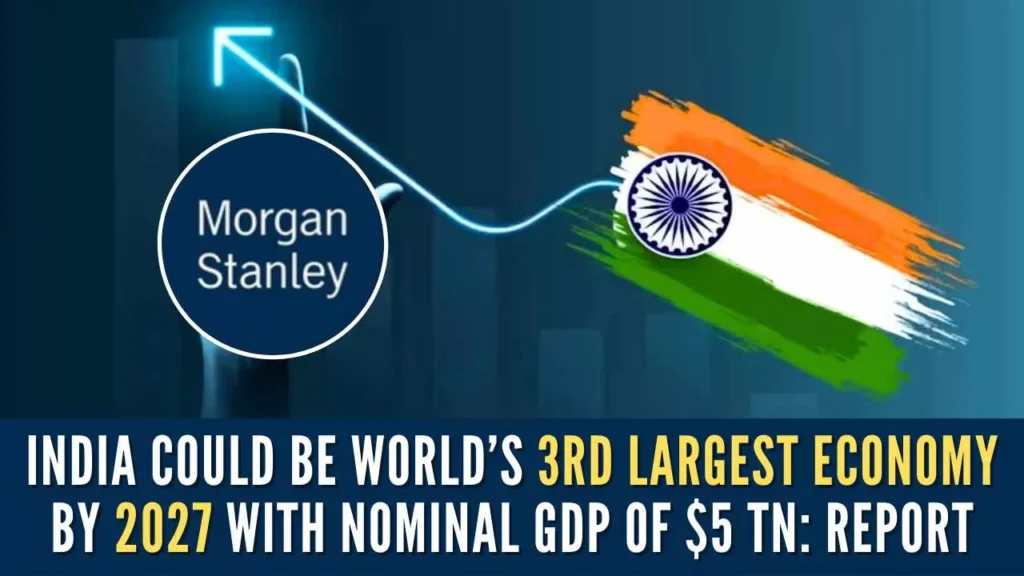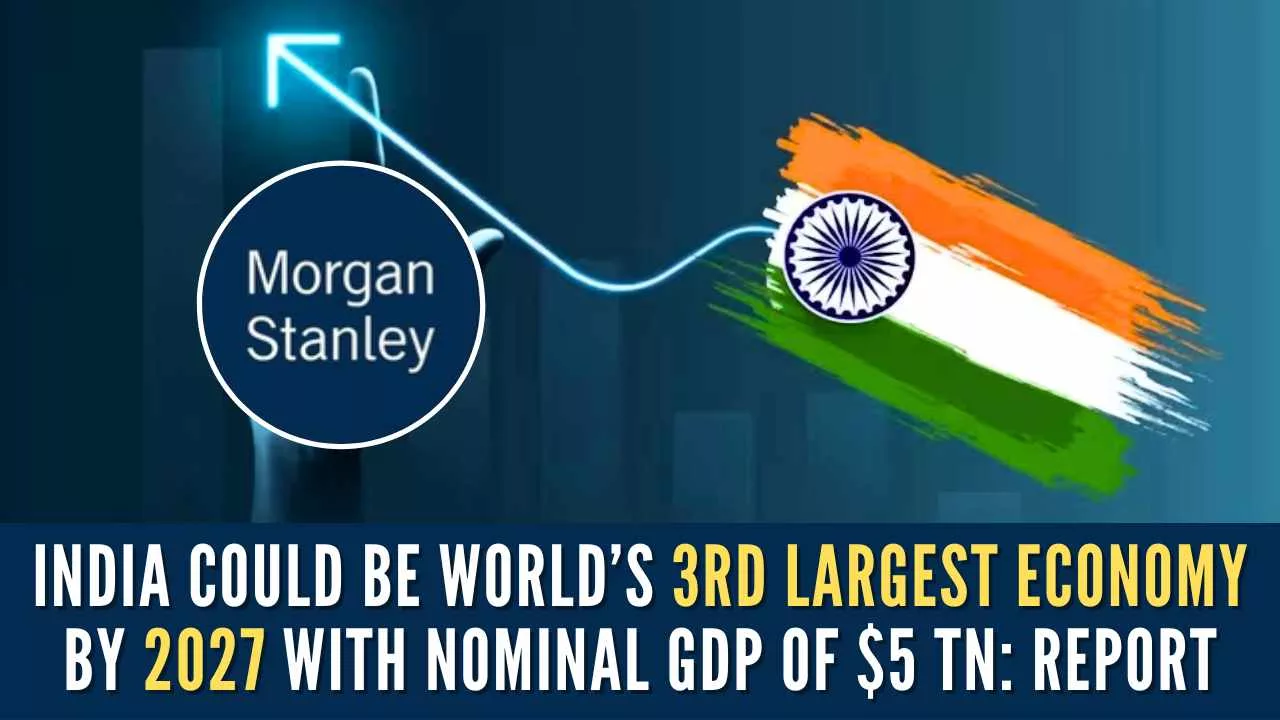
India is on a trajectory to become the world’s third-largest economy by 2028, with its Gross Domestic Product (GDP) expected to reach $5.7 trillion, according to a recent report by Morgan Stanley.
Key Projections:
- Current Standing: As of 2023, India’s GDP stands at approximately $3.5 trillion, positioning it as the fifth-largest economy globally.
- 2026 Forecast: The economy is projected to expand to $4.7 trillion by 2026, surpassing Germany and securing the fourth spot worldwide.
- 2028 Milestone: By 2028, India’s GDP is anticipated to reach $5.7 trillion, elevating it to the third-largest economy, following the United States and China.
Growth Drivers:
Several factors contribute to this optimistic outlook:
- Macro Stability: Prudent fiscal and monetary policies have fostered a stable economic environment conducive to growth.
- Infrastructure Development: Significant investments in infrastructure have enhanced connectivity and efficiency, bolstering economic activities.
- Demographic Dividend: A young and expanding workforce provides a robust foundation for sustained economic expansion.
Historical Context:
India’s economic ascent has been notable:
- Ranked 12th in global economies in 1990.
- Dropped to 13th position in 2000.
- Climbed to 9th place by 2020.
- Achieved 5th position in 2023.
This progression underscores India’s resilience and strategic economic planning.
Global Implications:
India’s rise is expected to reshape global economic dynamics:
- Consumer Market: Emerging as a leading consumer market, attracting global businesses and investors.
- Trade Relations: Strengthening its influence in international trade and policy negotiations.
- Investment Hub: Becoming a focal point for foreign direct investment, spurred by a large and growing market.
Conclusion:
India’s projected economic growth signifies a pivotal shift in the global economic landscape. With strategic policies and continued investments in key sectors, India is poised to play a central role in shaping the future of the world economy.
